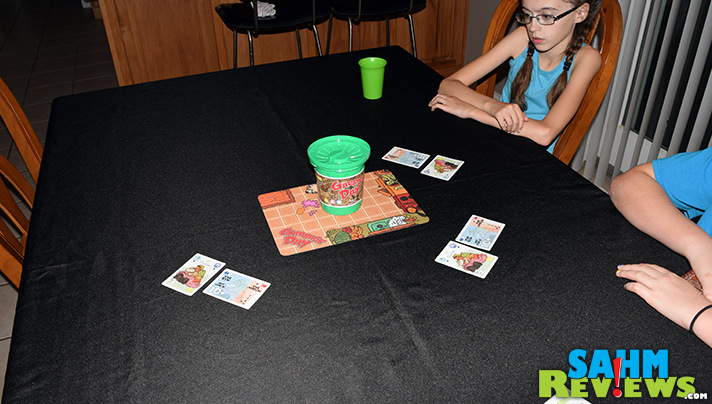

- GARBAGE DAY GAME DEMO FACEBOOK CODE
- GARBAGE DAY GAME DEMO FACEBOOK SERIES
- GARBAGE DAY GAME DEMO FACEBOOK FREE
(By the way: “Blaxxun”? That’s another Stephenson reference, to Black Sun Systems, the fictional company that created Stephenson’s fictional metaverse. Wikipedia’s thorough, but not comprehensive, timeline of virtual environments misses our MOO, the Icelandic dance club, and half a dozen other early virtual experiments. Don’t remember these moments of web history? Neither does the web, for the most part. Netscape supported it via a plug-in, and Blaxxun built a 3-D chat space. OZ Virtual used VRML, a format for specifying 3-D objects in an HTML-like language that was all the rage for a few months in 1996. An Icelandic firm, OZ Virtual, introduced a metaverse with 3-D avatars in sexy streetwear dancing on an infinite dance floor, which felt like the future for a few days. I watched other metaverses rise and fall. Our boss pulled the plug on the project, telling us, “I know it’s the future, but if I can’t use it, I can’t sell it to investors.”

The MOO was buggy and quirky and demanded that you think of the world as a set of six-sided cubes made up of webpages. On a good day, I could give a demo that made it look smooth, slick, and fun to use. We were building things no one had ever seen before.īut here’s the thing: The MOO was garbage. It got us our first round of venture-capital funding, demonstrating to our investors that we weren’t just kids translating mutual-fund propaganda into HTML. Most people weren’t building HTML-enabled multiplayer spaces in 1995. And remember, this was 1995: The photos we used to represent this metaverse of ours were taken on chemical film! Which we then developed at a photo-processing lab! And then scanned on a flatbed scanner!

We sold our CEO on the idea by telling him that the MOO could be a simulation of life in the big city postcollege, bringing onto the site new users who wanted to experience New York City while still in Ann Arbor or State College.
GARBAGE DAY GAME DEMO FACEBOOK CODE
Melanie Stowell, who had spent much of her undergraduate education logged on to various MOOs and MUDs (multiuser dungeons, another kind of virtual game space), wrote the code to make this work, and Daniel and I made hundreds of images to illustrate the space, which were dutifully inserted into webpages via Nate’s code. Each room in the MOO, which would normally have only a text-based description, was associated with six JPEG images representing directions you could go (up, down, north, south, east, west), each of which was an image map with objects you could click on and interact with. Our friend Nathan Kurz hacked Pavel Curtis’s LambdaMOO code to turn an “object oriented multiplayer dungeon”-a multiplayer, text-based game-into a web-based, graphical experience. When that business model didn’t take off (can’t imagine why), the half-dozen folks in the “tech cave” revived the metaverse idea.Īnd so, we skinned a MOO-that is, an online environment meant for multiplayer games. Sorry again about that.) Instead, we were a lifestyle magazine for recent graduates, providing smart, edgy, but practical content-“tools for life”-while hawking mutual funds to 20-somethings. (It was also before I accidentally invented pop-up ads.
GARBAGE DAY GAME DEMO FACEBOOK FREE
Both of those authors owed a debt to Morton Heilig’s 1962 Sensorama machine, and on and on we go, back in time to Plato’s shadows on a cave wall.)ĭaniel and I got a chance to actually build our metaverse about six months later, after we both joined Tripod as graphic designers and “webkeepers.” This was well before Tripod became a competitor to GeoCities, offering free webpages to all.
GARBAGE DAY GAME DEMO FACEBOOK SERIES
His vision of the metaverse owed a debt to Vernor Vinge’s 1981 True Names and to a series of William Gibson novels from the ’80s.

(Stephenson, of course, wasn’t being entirely original either. But we were young and naive and believed that our metaverse would rock. We were both (barely) self-conscious enough to understand that Snow Crash took place in a dystopia, and that Stephenson was positing a beautiful virtual world because the outside world had become so shitty that no one wanted to live in it. We were hoping to re-create the vision that Neal Stephenson had outlined in his 1992 book, Snow Crash. To be very clear, Daniel and I were in no way being original. It made a certain sense: Most users were on sub-56k modems, and AOL was shipping out enough CD-ROMs to pave Los Angeles each week. In our version of the metaverse, a server would track the identity of objects and their location in virtual space, but you’d render the objects locally, loaded to your hard drive off of a CD-ROM. It was November 1994, just as the graphical web was becoming a thing, and we thought that the 3-D web could be just a few tweaks down the road. In a booth at Ted’s Fish Fry, in Troy, New York, my friend Daniel Beck and I sketched out our plans for the metaverse.


 0 kommentar(er)
0 kommentar(er)
